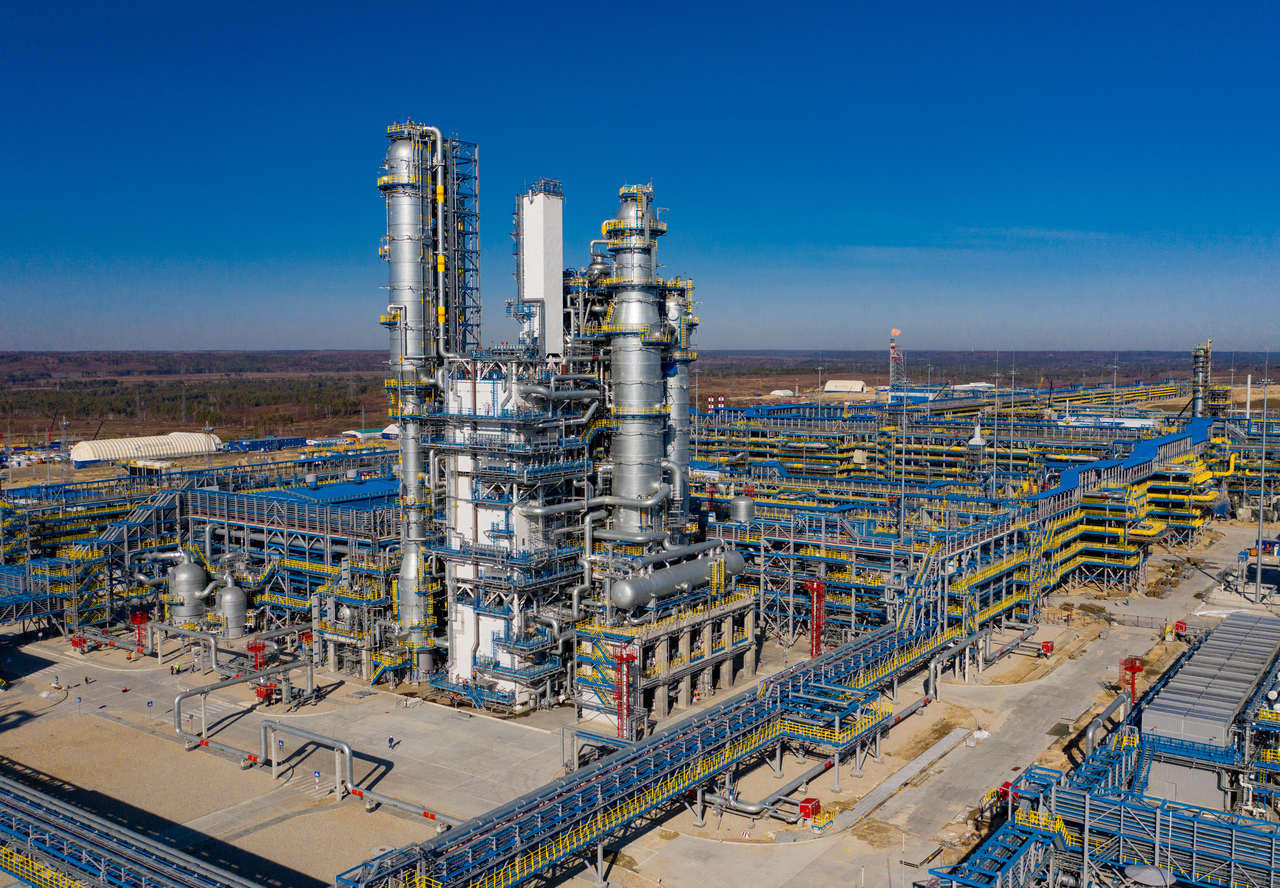Russia's Role in the European Gas Crisis
Gas prices in the European Union have reached the highest levels in 13 years. In view of the tighter supplies, EU Member States have started to implement support mechanisms for the most vulnerable consumers. Gazprom, however, is trying to exacerbate the crisis to again increase Europe’s dependence on Russian gas. The effects of this manipulation will be felt across the entire EU economy and may adversely affect its energy transformation plans. Ukraine, though, will be affected most by this situation.
 Fot. Yuri Smityuk/TASS/Forum
Fot. Yuri Smityuk/TASS/Forum
The European Gas Crisis
Gas prices on European exchanges have been rising since the beginning of the year and are now at their highest levels in 13 years. In the reference Dutch TTF hub, the price is above €100 per MWh, which represents an increase of more than 300% year on year. As around 80% of the gas consumed in Europe is priced in hubs (which reflect market mechanisms, not indexation to the oil price), the European market is highly susceptible to fluctuations on international markets.
On the demand side, European gas prices are influenced by, among others, the increased demand for gas in Asia (e.g., to assist China’s turn from coal), the accelerating post-pandemic recovery, as well as weather conditions (e.g., forecasted cold winter in the EU), which contribute to an overall increase in energy consumption. On the supply side, important factors influencing the crisis include a steady decline in gas production in the EU and growing dependence on imports, unfavourable weather conditions in exporting countries (e.g., Hurricane Nicholas limited exports of American LNG), as well as planned temporary shutdowns of gas pipelines that were postponed to this year (e.g., in Norway) supplying gas to the EU.
Although the EU relies on gas for only around 20% of its electricity production, the higher prices are putting a lot of pressure on the economy, mainly because of limited alternatives. Oil and coal prices also have increased markedly in 2021, but their carbon footprint and ETS allowance prices are not conducive to increased consumption. In turn, renewable energy sources (RES), due to fewer windy and sunny days this year, also cannot guarantee stable supplies. As a result, wholesale electricity prices have also increased significantly, which translates into disruptions in companies’ supply chains and deepening of the energy poverty phenomenon (e.g., deterioration of the financial conditions of households). In recent weeks, the governments of many European countries, including Spain, Italy, Greece, and France have launched support mechanisms for the most vulnerable consumers.
Russia’s Actions
Russia could mitigate the effects of the energy crisis in Europe by increasing its gas supply. So far, though, Gazprom has reacted variably to the increase in demand in the EU, for example, by directing additional gas volumes to European customers to take advantage of the higher gas prices. At present, however, it is only meeting its standard contractual obligations towards European companies and, according to the Gazprom authorities, supplies additional gas only where it is “technically” possible.
Gazprom’s ability to supply gas depends on, among others, the availability of gas in Russia (production was reduced in 2020 as a result of the pandemic, and the government’s current priority is to fill Russian storage facilities before winter), and the demand for Russian gas on other markets (the EU competes for Russian natural gas and LNG with Turkey, the post-Soviet countries, and China), as well as on the available capacity of European gas pipelines and LNG terminals.
Unlike in previous years during the summer period, the Russian company did not place enough gas in the storage facilities it controls in the EU. As a result, the average of all European gas storage facilities on 1 October this year was only 75%, compared to the approximate average in the last decade of 85%. At the same time, Gazprom is refraining from using additional capacity in the Yamal and Ukrainian gas pipelines, which are only operating at one-third capacity, despite the growing demand. The imbalance between supply and demand, leading to an increase in gas prices, intensifies the interest of speculators in gas futures, which is also in Gazprom’s interest.
The Political Dimension of Russia’s Actions
Over the last decade, short-term contracts have been gradually replacing long-term ones, and the price of gas has started to be linked to the price at gas hubs, instead of to oil. At the same time, the EU’s ambitious decarbonisation policy based on RES is being implemented. Russia sees these developments as threats to its interests, which in the long term will reduce demand for energy resources. It is trying to prove that these factors are responsible for the current energy crisis, which could be alleviated by returning to long-term contracts that would stabilise the market. By causing turbulence in the EU gas market, Russia aims to increase the EU’s dependence on its supplies. About 45% of the EU’s gas imports come from Russia, and the level of dependence is steadily increasing—in 2011, it was about 30%. The benefit for Russia of long-term contracts is twofold: they secure long-term demand for Russian gas in the EU (usually over 20-30 years) and influence the shape of the energy transformation in Europe, reducing the chances of developing, for example, nuclear energy as a competitor to gas.
Russia also argues that the launch of Nord Stream 2 (NS2) would quickly stabilise energy supplies. This argument has been raised by President Vladimir Putin and the management of Gazprom. Russia is pressing for an accelerated certification procedure for the pipeline in violation of European regulations and the principle of energy solidarity. NS2 would allow Russia to practically eliminate transit through Ukraine and the Yamal pipeline running through Poland, which could already be used to increase gas supplies to the EU. An agreement in force since October with Hungary to transport gas via TurkStream and Serbia, bypassing Ukraine, serves a similar purpose. Eliminating transit through Ukraine is intended to reduce revenues from gas transport and make it more difficult for others suppliers to provide it with gas. A steady supply of gas through the pipelines is needed by Ukraine for reverse flows (importing gas from EU countries), by which it covers its demand without relying on Russian gas. Russia’s actions eventually could lead to the economic and political destabilisation of Ukraine.
Conclusions and Prospects
Poland may be relatively less affected than other EU countries by the rising gas prices due to its diversified supplies to state-owned gas company PGNiG, which are based on a mix of medium- and long-term contracts and large reserves in underground storage. The launch of the Baltic Pipe pipeline and gas imports from Norway (planned for late 2022) will further increase Poland’s resilience to similar crises in the future. However, the high gas prices in Europe will be felt most strongly by industrial consumers, including those in the metals and fertiliser industries. This in turn will increase costs in the construction, agricultural, and food sectors, among others, adding to inflationary pressures and disrupting some supply chains. The economic impact of the crisis could be felt most in the first half of 2022.
To avoid future crises in the European gas market, the EU should revise its regulations on the security of natural gas supply and oblige the Member States to build regional strategic gas reserves. Some EU countries, including Spain, are also calling for a catalogue of permitted intervention tools to counter the effects of sudden increases in energy prices. In relation to Gazprom, the European Commission should initiate antitrust proceedings for abuse of its dominant market position. The current crisis is also an argument for greater use of nuclear energy as a stabilising force in an energy system in which RES is playing an increasingly important role. To this end, the EU should include nuclear projects in the taxonomy regulations as contributing to the sustainable development of the European economy.
Ukraine may be hardest hit by Russia’s attempts to deepen the gas crisis in Europe. Its gas and coal stocks at the start of the heating season were at a level that does not guarantee the continuity of energy supplies to businesses. In turn, the reduction in the volume of gas transported from Russia via Ukraine lessens the possibility of increasing supplies to that country under the reverse flow system. This may result in the need to, among other options, import energy from Belarus and Russia and may delay the synchronisation of the Ukrainian energy sector with the EU’s. Poland may encourage Ukraine to invest in the construction of another interconnector that would enable rapid emergency supplies from Poland in the event of a gas deficit in that country.



